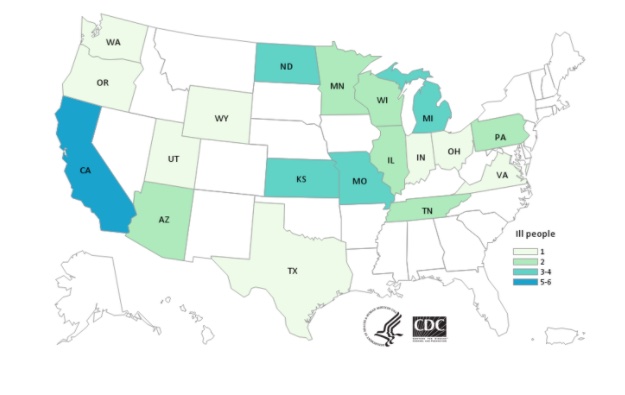The U.S. Food and Drug Administration (FDA) has found the E. coli strain linked to two leafy greens outbreaks in cattle feces on a road uphill from the farms where the implicated greens were grown. The finding was announced today as the agency wrapped up its investigation of a leafy greens E. coli outbreak in the fall of 2020 that was caused by the same E. coli strain associated with a romaine outbreak in the fall of 2019.
“The results of the FDA’s investigation of this outbreak are a surprise to no one,” said Food Safety Attorney Fred Pritzker, whose law firm has represented many of the people sickened by contaminated salad greens. “Each year is the same. There is an outbreak, the FDA investigates, and then makes recommendations that growers take action to prevent contamination from cow manure on adjacent ranches and improve their record-keeping so investigators can more easily trace back the source of contamination.”
The problem, said Pritzker, is that basic food safety measures shouldn’t be suggestions that can, and have, been ignored. They should be mandatory.
This E. coli outbreak is one of nine linked to leafy greens since 2017 caused by the same E. coli strain, the same lettuce grower or both. And, as was the case with most of its predecessors, it ended not because FDA investigators found the source and pulled the implicated product from store shelves, but because the growing season ended.
Where is the accountability, where are the consumer protections, Pritzker asked.
Hundreds of people have suffered serious illness and some have died. The nine most recent outbreaks sickened more than 540 people, putting at least 241 in the hospital. Fifty people developed hemolytic uremic syndrome (HUS) a form of kidney failure associated with E. coli infections and seven people died. From eating salad.
And that’s just the announced outbreaks since 2017. In the preceding decade, 40 E. coli outbreaks were linked to leafy greens. Together, those outbreaks resulted in 1,212 illnesses, 420 hospitalizations, 77 cases of HUS and eight deaths.
The 2020 outbreak sickened 40 people in 19 states. Twenty people were so sick they needed to be hospitalized, four of them developed HUS. The number of cases reported from each state was: AZ (2), CA (6), IL (2), IN (1), KS (4), MI (3), MN (2), MO (3), ND (4), OH (1), OR (1), PA (2), TN (2), TX (1), UT (1), VA (1), WA (1), WI (2), and WY (1).
The FDA ended its announcement today saying: “In the meantime, as recommended in our Leafy Greens Action Plan, the FDA continues to recommend growers assess and mitigate risk associated with adjacent and nearby land-use practices, particularly as it relates to the presence of livestock, which are a persistent reservoir of E. coli O157:H7 and other STEC.”
The fact that cattle are the primary reservoir of E. coli O157:H7 is well-known, said Pritzker. So are the facts that water runs downhill and contaminated water should not be used to irrigate crops.
